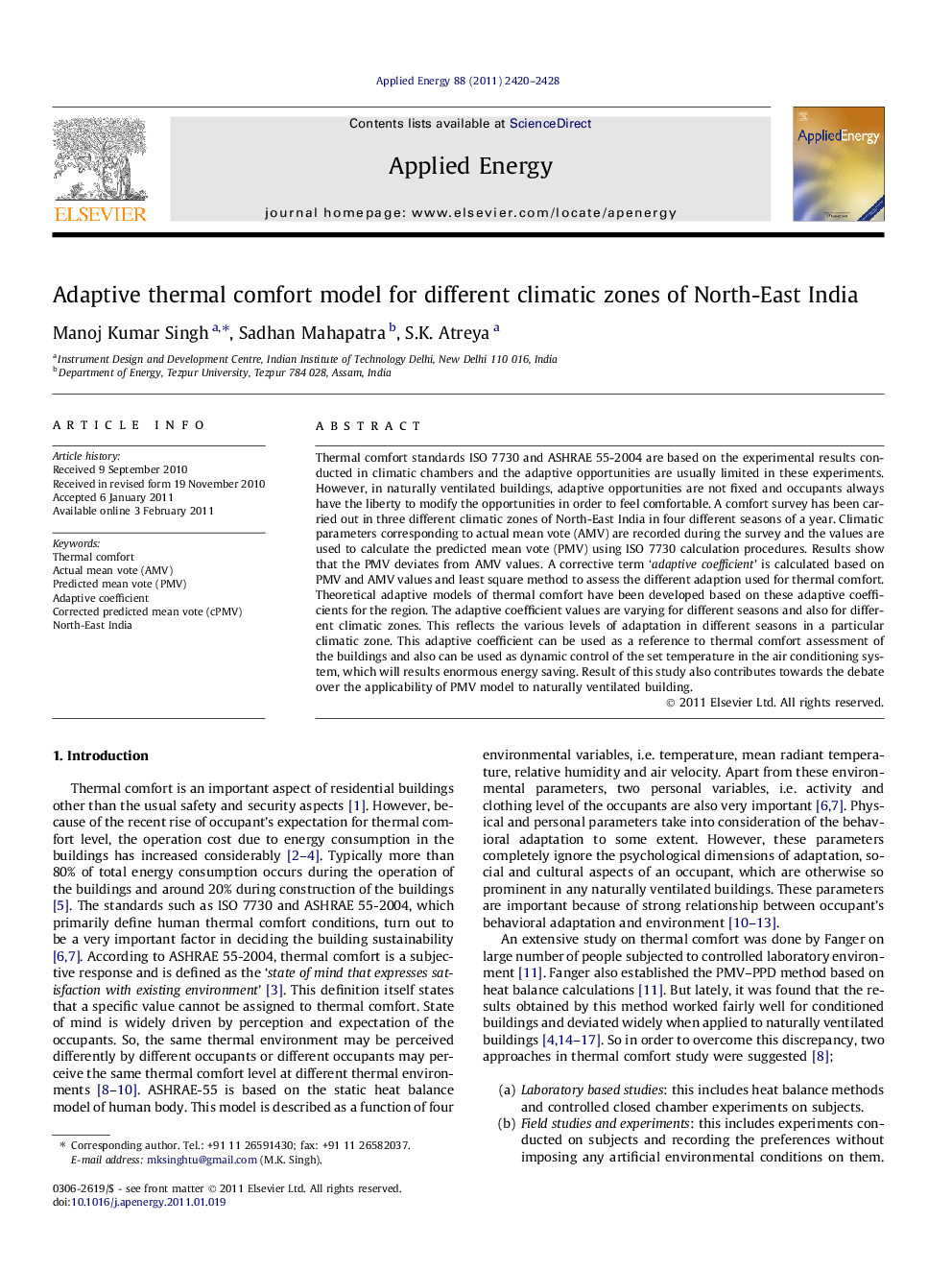| Article ID | Journal | Published Year | Pages | File Type |
|---|---|---|---|---|
| 244394 | Applied Energy | 2011 | 9 Pages |
Thermal comfort standards ISO 7730 and ASHRAE 55-2004 are based on the experimental results conducted in climatic chambers and the adaptive opportunities are usually limited in these experiments. However, in naturally ventilated buildings, adaptive opportunities are not fixed and occupants always have the liberty to modify the opportunities in order to feel comfortable. A comfort survey has been carried out in three different climatic zones of North-East India in four different seasons of a year. Climatic parameters corresponding to actual mean vote (AMV) are recorded during the survey and the values are used to calculate the predicted mean vote (PMV) using ISO 7730 calculation procedures. Results show that the PMV deviates from AMV values. A corrective term ‘adaptive coefficient’ is calculated based on PMV and AMV values and least square method to assess the different adaption used for thermal comfort. Theoretical adaptive models of thermal comfort have been developed based on these adaptive coefficients for the region. The adaptive coefficient values are varying for different seasons and also for different climatic zones. This reflects the various levels of adaptation in different seasons in a particular climatic zone. This adaptive coefficient can be used as a reference to thermal comfort assessment of the buildings and also can be used as dynamic control of the set temperature in the air conditioning system, which will results enormous energy saving. Result of this study also contributes towards the debate over the applicability of PMV model to naturally ventilated building.
